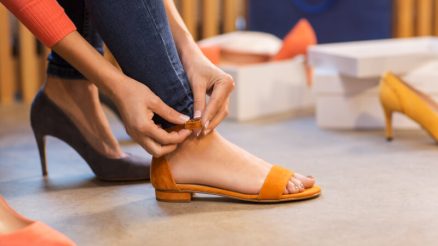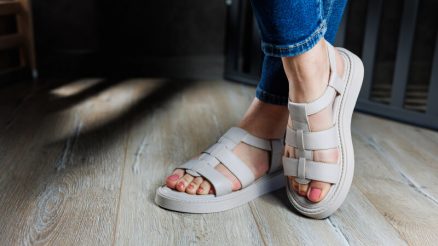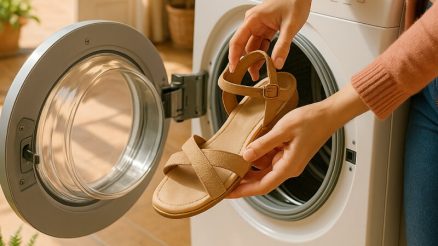Birkenstocks. The name alone conjures images of earthy comfort, laid-back style, and perhaps a touch of controversy. For decades, these distinctive sandals have been a staple for many, lauded by some as the epitome of foot health and dismissed by others as clunky, unflattering footwear. But beyond the fashion debate, a fundamental question remains: are Birkenstocks really good for your feet?
Let’s strap in and take a deep dive into the ergonomics, benefits, and considerations of these iconic German sandals.
Birkenstock’s Signature Design: A Closer Look
To understand their impact, we must first appreciate what makes a Birkenstock a Birkenstock. Their design is a meticulously crafted system focused on anatomical support:
- The Contoured Cork Footbed: This is the heart of the Birkenstock. Made from a blend of cork and latex, it’s designed to mold to the unique shape of your foot over time. This isn’t just about softness; it’s about providing a custom-like fit that supports your foot’s natural contours.
- Pronounced Arch Support: Unlike many flat sandals, Birkenstocks feature significant arch support, designed to distribute pressure evenly across the foot and maintain the natural alignment of your arches.
- Deep Heel Cup: This cradles your heel, providing stability and helping to keep your foot’s natural padding directly under the heel bone. It’s crucial for shock absorption and proper alignment.
- Raised Toe Bar: Positioned beneath your toes, this bar encourages the natural gripping motion of your toes, promoting better circulation and strengthening foot muscles.
- Roomy Toe Box: Birkenstocks typically offer ample space for your toes to splay naturally, preventing crowding and pressure that can lead to bunions or hammer toes.
The Good: Benefits for Your Feet
When worn by the right person and broken in correctly, Birkenstocks can offer a multitude of benefits:
- Superior Arch Support: This is their most celebrated feature. For individuals with fallen arches or those prone to plantar fasciitis, the firm, anatomically shaped arch support can significantly alleviate pain and provide much-needed stability.
- Even Weight Distribution: The contoured footbed distributes your body weight more evenly across the sole of your foot, reducing pressure points that can develop in flatter, less supportive footwear. This can be particularly beneficial for people who spend a lot of time on their feet.
- Improved Posture and Alignment: By supporting the natural alignment of the feet, Birkenstocks can have a positive ripple effect up the kinetic chain, potentially improving ankle, knee, hip, and even lower back alignment.
- Natural Foot Movement: The raised toe bar encourages a natural gripping action with your toes, similar to walking barefoot. This can help strengthen intrinsic foot muscles and promote better circulation.
- Durability and Longevity: Made with high-quality materials, Birkenstocks are designed to last. As they mold to your feet, they become increasingly comfortable, almost like a second skin.
- Breathability: The open-toed designs and natural materials (cork, leather, suede) allow feet to breathe, reducing the risk of fungal infections and discomfort from perspiration.
The Nuance: Potential Drawbacks and Considerations
While many sing their praises, Birkenstocks aren’t a universal panacea for all feet:
- The “Breaking-In” Period: This is perhaps the most common complaint. The firm footbed isn’t instantly soft. It requires time for the cork to soften and mold to your unique foot shape. This can initially feel stiff, even uncomfortable, and rushing the process can lead to blisters.
- Not for Everyone:
- Flat Feet (Severe): While the arch support is generally good, individuals with extremely flat feet might find the pronounced arch too aggressive or uncomfortable initially. Some may need custom orthotics for optimal support.
- High Arches (Very High): Conversely, some with very high arches might find that the standard Birkenstock arch doesn’t fully support their specific needs, leaving a gap.
- Narrow Feet: The classic Birkenstock fit is generous. While narrow options exist, some individuals with very slender feet might find even the narrow sizes too wide, leading to excessive foot movement within the shoe.
- Lack of Flexibility: Birkenstocks are designed for stability and support. They are not ideal for high-impact activities like running, intense hiking, or sports that require quick directional changes or significant foot flexion.
- Initial Cost: They represent a higher upfront investment compared to many standard sandals, though their longevity often makes them cost-effective in the long run.
Who Benefits Most from Birkenstocks?
Birkenstocks often shine for individuals with:
- Average to Medium Arches: They provide excellent support for these foot types.
- Plantar Fasciitis: The arch support and deep heel cup can significantly reduce strain on the plantar fascia.
- Metatarsalgia or Forefoot Pain: The roomy toe box and even pressure distribution can alleviate pain in the ball of the foot.
- General Foot Fatigue: People who stand or walk for long periods can find substantial relief.
- Bunions or Hammertoes: The generous toe box allows for natural toe splay, preventing irritation.
Who Might Need to Be Cautious?
- Individuals Needing Motion Control: While supportive, they don’t offer the same level of motion control as a specialized running shoe or stability shoe for those with significant overpronation.
- People with Specific Orthopedic Needs: If you have severe foot deformities or very unique gait patterns, a podiatrist’s advice on footwear is paramount.
- Athletes: As mentioned, they are not athletic shoes and should not be used for high-impact activities.
Tips for Buying and Wearing Birkenstocks
- Get the Right Size and Width: Don’t assume your usual shoe size. Try them on. Your toes should not touch the front rim, and your heel should sit comfortably within the heel cup without touching the back rim. Ensure you choose between regular/wide and narrow options.
- Break Them In Gradually: Start by wearing them for an hour or two a day, gradually increasing the wear time. This allows the cork to soften and mold without causing blisters.
- Listen to Your Feet: If they cause persistent pain beyond the initial stiffness, they might not be the right fit for you.
- Maintain Them: Clean the footbeds and condition the leather straps to prolong their life.
Conclusion
So, are Birkenstocks good for your feet? The answer is a resounding “yes” for many, but “not necessarily for everyone.” Their anatomical design, particularly the robust arch support and deep heel cup, offers significant benefits for foot health, alignment, and overall comfort, especially for daily wear and extended periods of standing or walking.
However, the breaking-in period and suitability for specific foot types are important considerations. If you’re seeking a shoe that promotes natural foot function, provides excellent support, and prioritizes long-term comfort over instant plushness, Birkenstocks are definitely worth exploring. Just remember to give them – and your feet – the time they need to become one.







